*NURSING > EXAM > Chapter 22: Care of Patients with Head and Spinal Cord Injuries deWit: Medical-Surgical Nursing: Con (All)
Chapter 22: Care of Patients with Head and Spinal Cord Injuries deWit: Medical-Surgical Nursing: Concepts & Practice, 3rd Edition/. RATED A
Document Content and Description Below
Chapter 22: Care of Patients with Head and Spinal Cord Injuries deWit: Medical-Surgical Nursing: Concepts & Practice, 3rd Edition MULTIPLE CHOICE 1. The nurse describes a concussion as a clos... ed head injury in which: 2. Why is the older adult more at risk for a cranial bleed following a head injury? 3. The emergency room nurse is assessing a newly admitted patient with a head injury. The nurse observes clear drainage from the nose. Which action should the nurse perform first? 4. In assessing the patient with a significant right intracerebral hemorrhage, the nurse anticipates that the patient will demonstrate which signs? 5. The nurse is caring for an older adult patient who was admitted to the hospital following a closed head injury that resulted in a 5-minute period of unconsciousness. The nurse most carefully monitors the patient for which change? 6. The patient with a suspected subdural hematoma is on an intravenous (IV) drip of mannitol infusing at 50 mL/hr. The nurse explains that the slow infusion rate is essential for what purpose? 7. Following a craniotomy to relieve increased intracranial pressure (ICP), which implementation should the nurse implement? 8. The unconscious patient withNaUcRloSseIdNhGeaKdIinNjGur.yCisOoMn mechanical ventilation. To improve brain perfusion through increased blood pressure, the carbon dioxide (CO2) should be maintained at what level? 9. The nurse is caring for a patient with a closed head injury. Which finding causes the nurse to suspect that the patient has developed diabetes insipidus (DI)? 10. Which position is best for an unconscious patient with a right-sided closed head injury? 11. The nurse is caring for a patieNnUt wRiSthIaNnGeKurIoNloGgi.cCinOjuMry who is awake. On assessment, the patient displays mild disorientation to surroundings and time and needs additional verbal cues to stimulate response to commands. The nurse correctly documents the patient’s level of consciousness (LOC) by using which term? 12. The nurse is caring for an adolescent who has lower limb paralysis after sustaining a spinal injury yesterday. The patient’s anxious mother asks if the paralysis is permanent. Which response is most appropriate for the nurse to make? 13. The nurse is caring for a patient with flaccid paralysis after sustaining a spinal cord injury 3 days earlier. The family excitedly notifies the nurse that the patient has flexed his arm. Which response is best for the nurse to make? 14. The nurse is caring for a patient with spastic paralysis. Which technique is most appropriate for the nurse to use when moving [Show More]
Last updated: 2 years ago
Preview 1 out of 10 pages

Buy this document to get the full access instantly
Instant Download Access after purchase
Buy NowInstant download
We Accept:

Reviews( 0 )
$18.50
Can't find what you want? Try our AI powered Search
Document information
Connected school, study & course
About the document
Uploaded On
Jul 20, 2021
Number of pages
10
Written in
Additional information
This document has been written for:
Uploaded
Jul 20, 2021
Downloads
0
Views
75


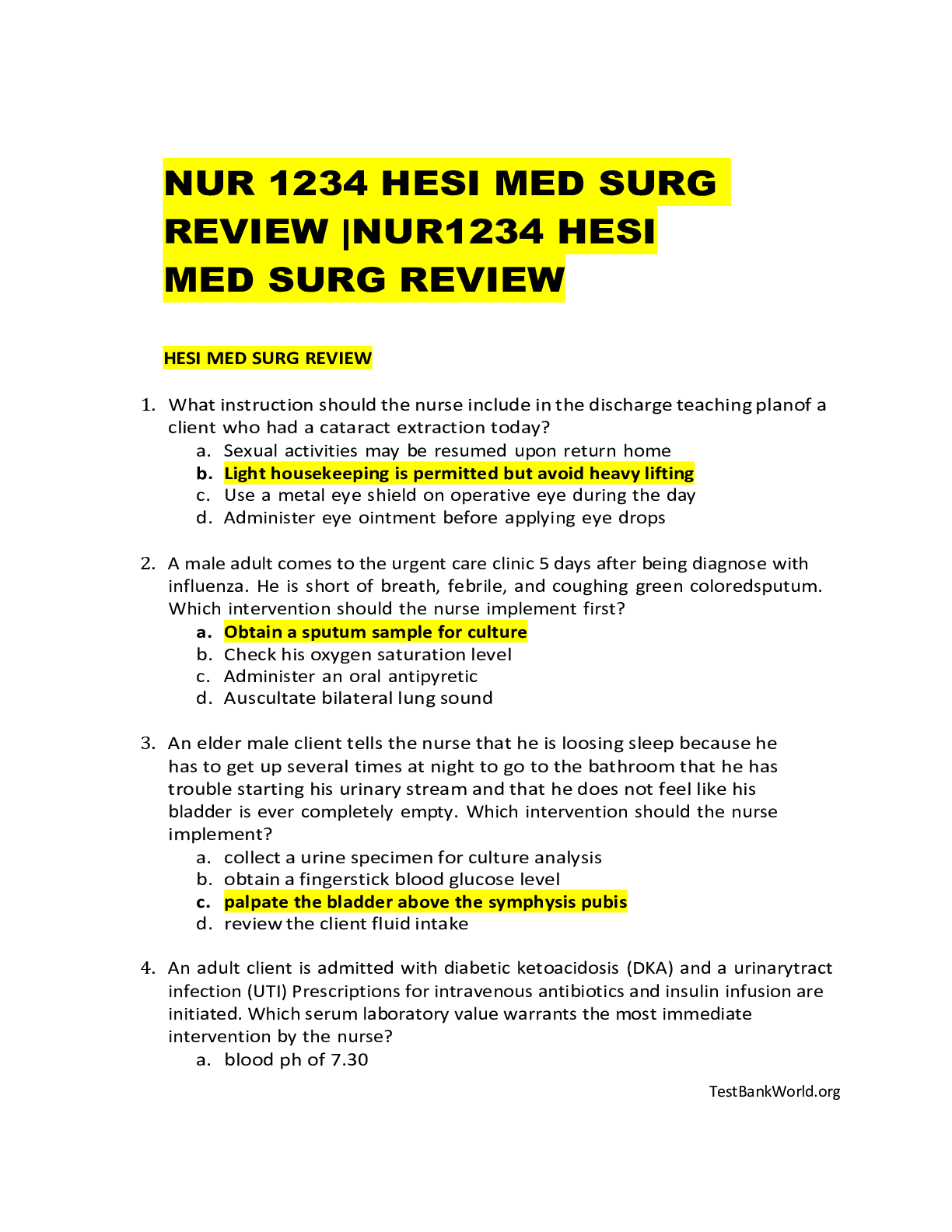

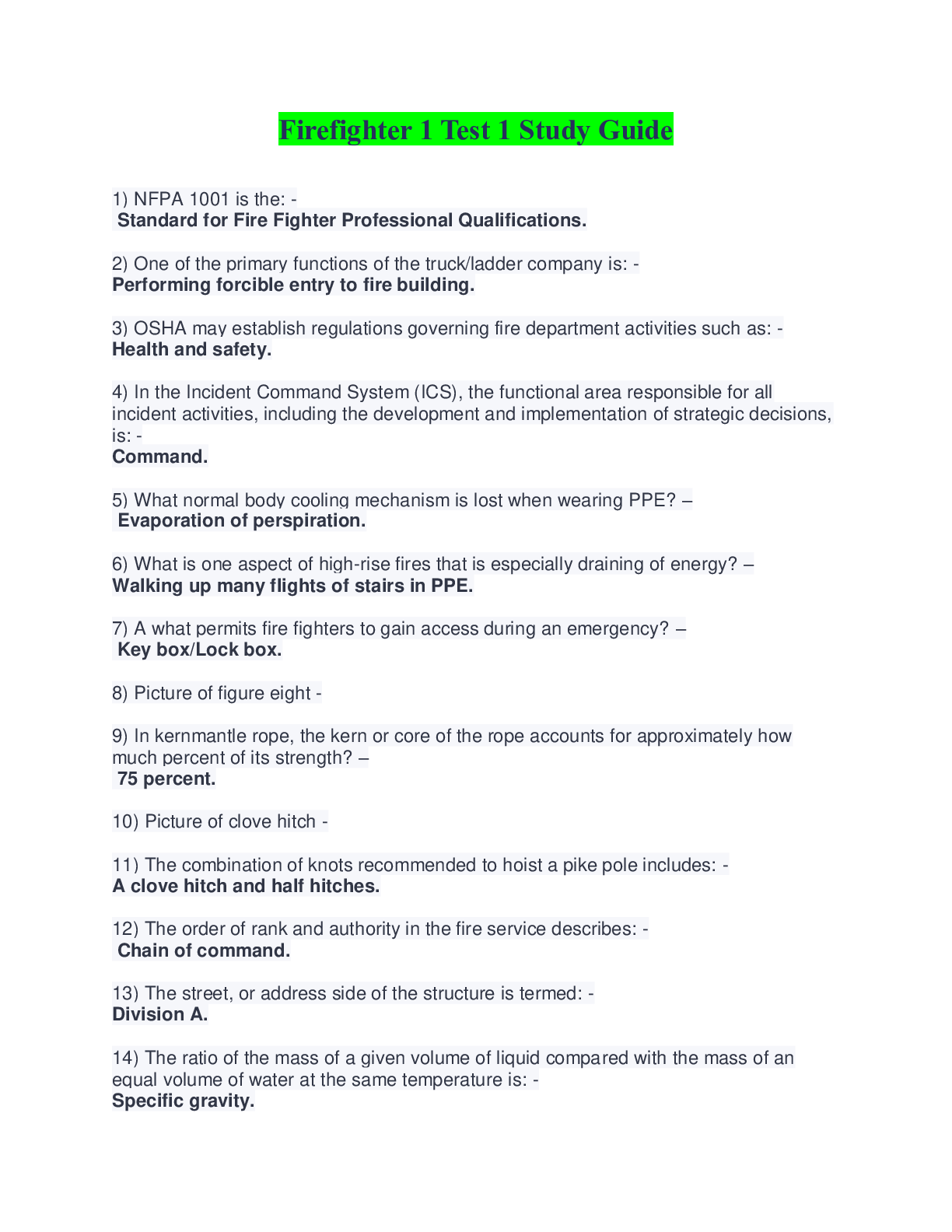
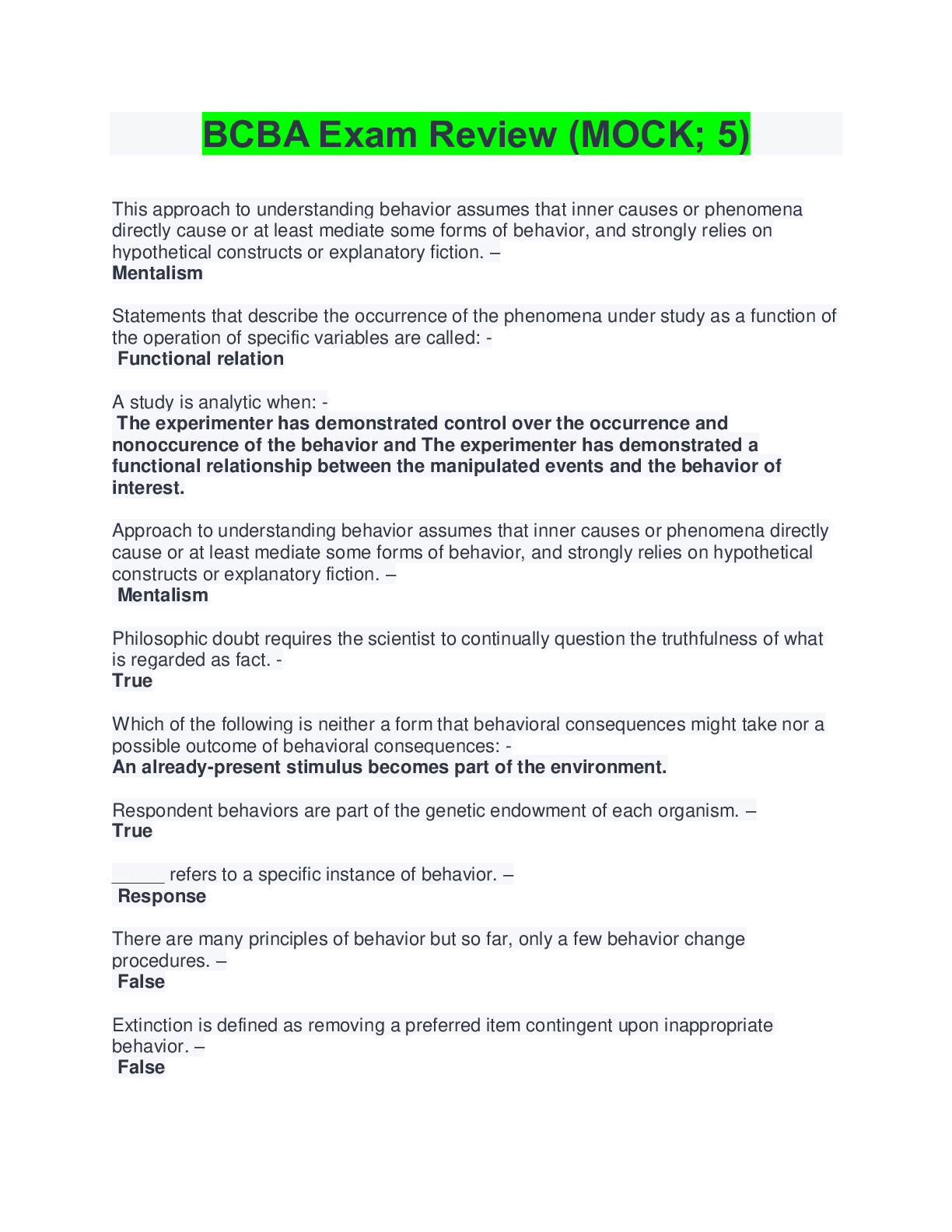
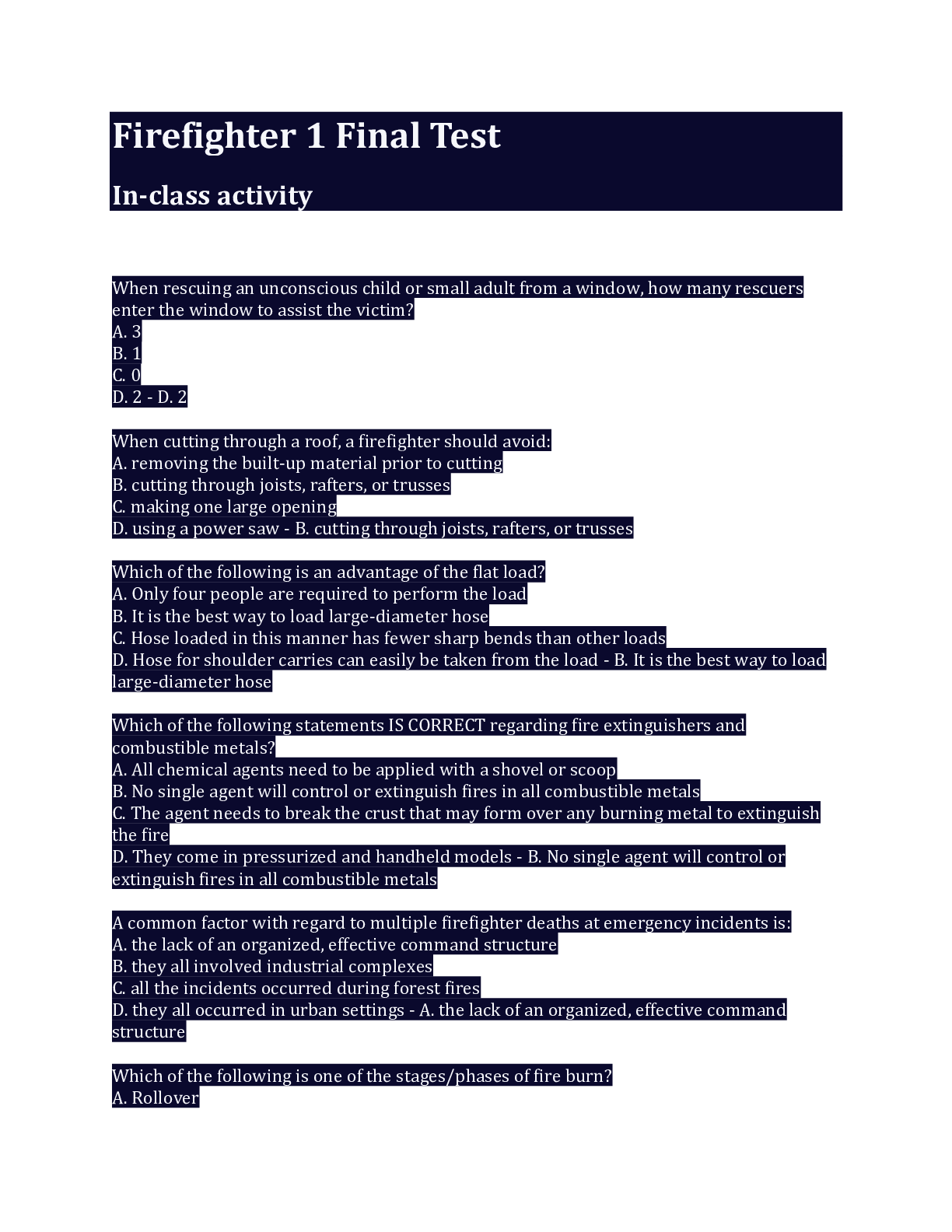
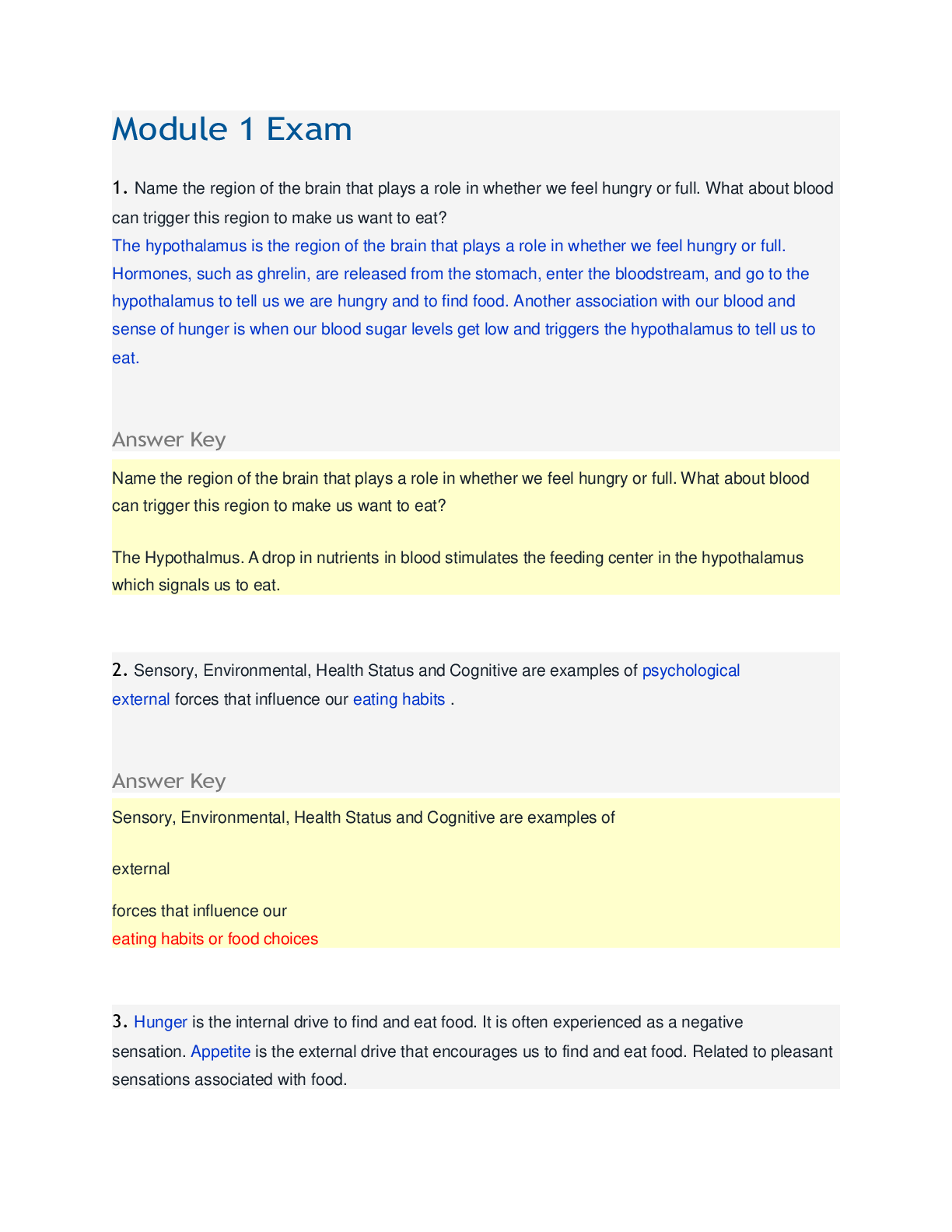
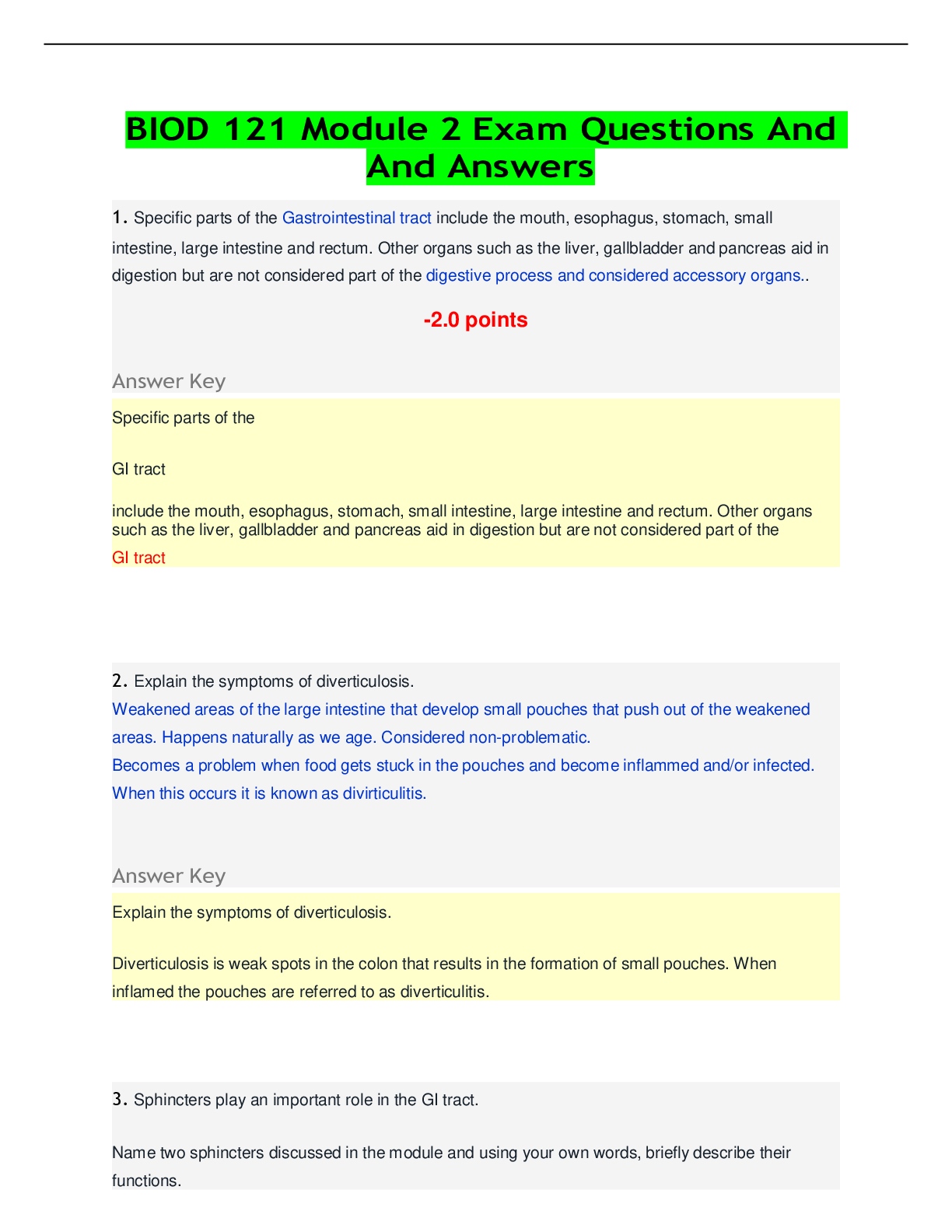
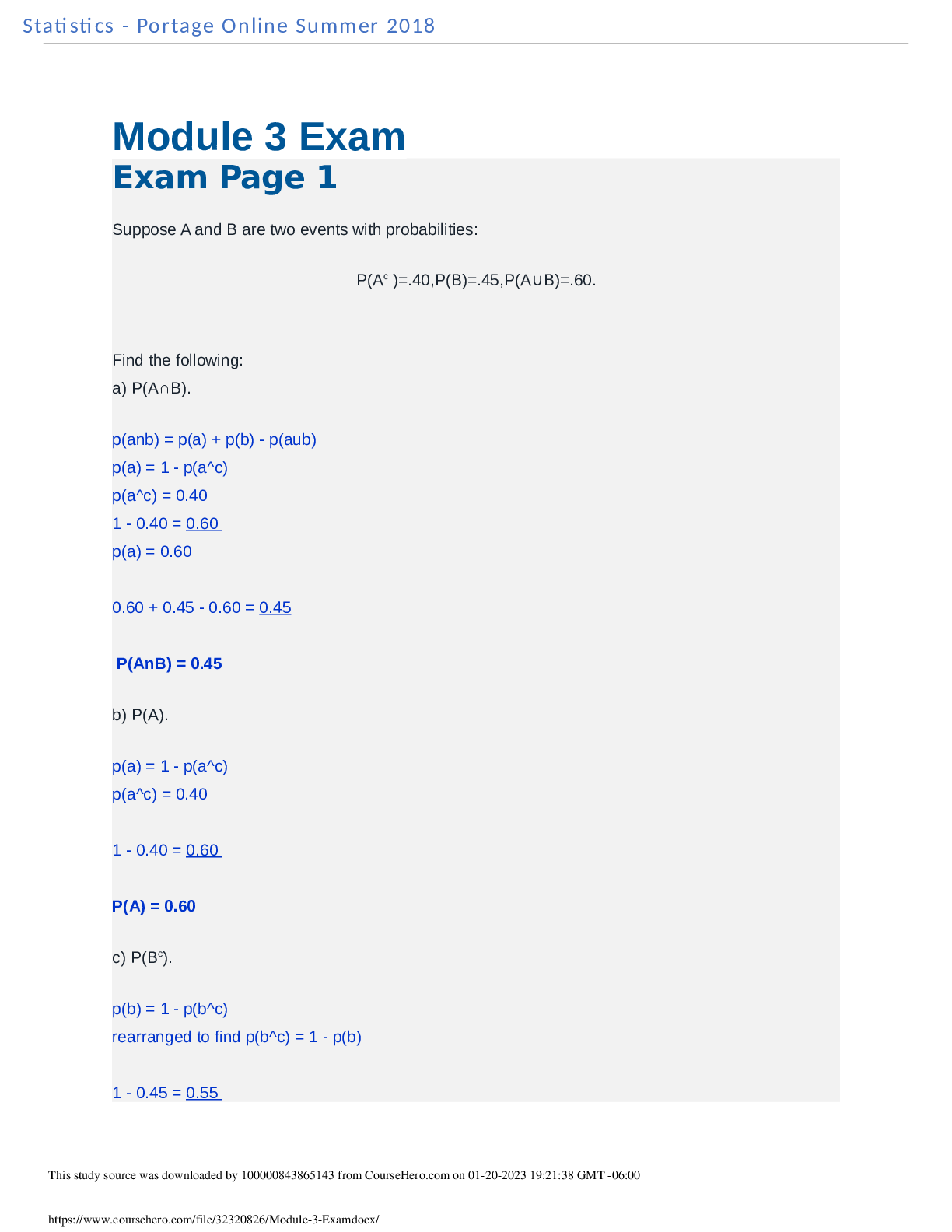
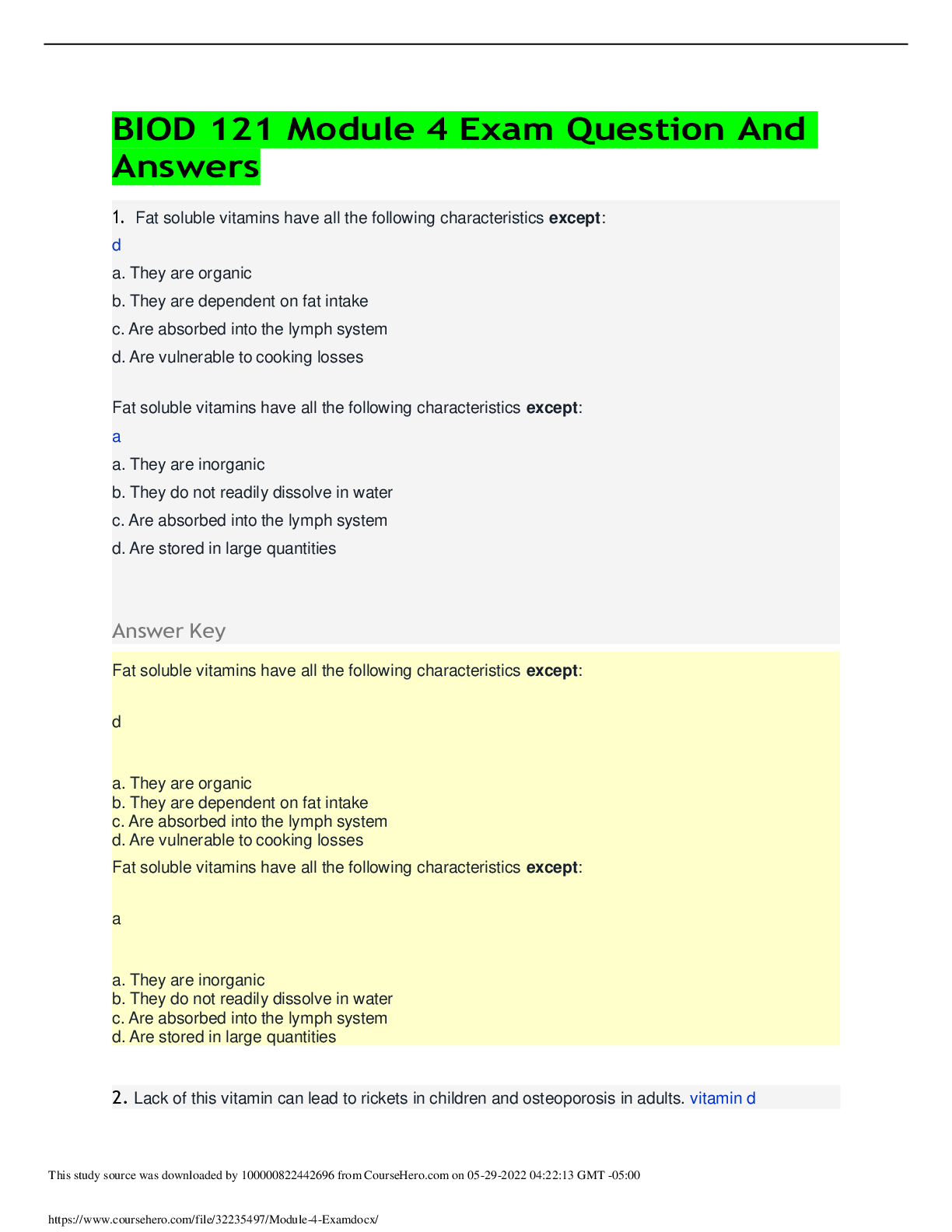
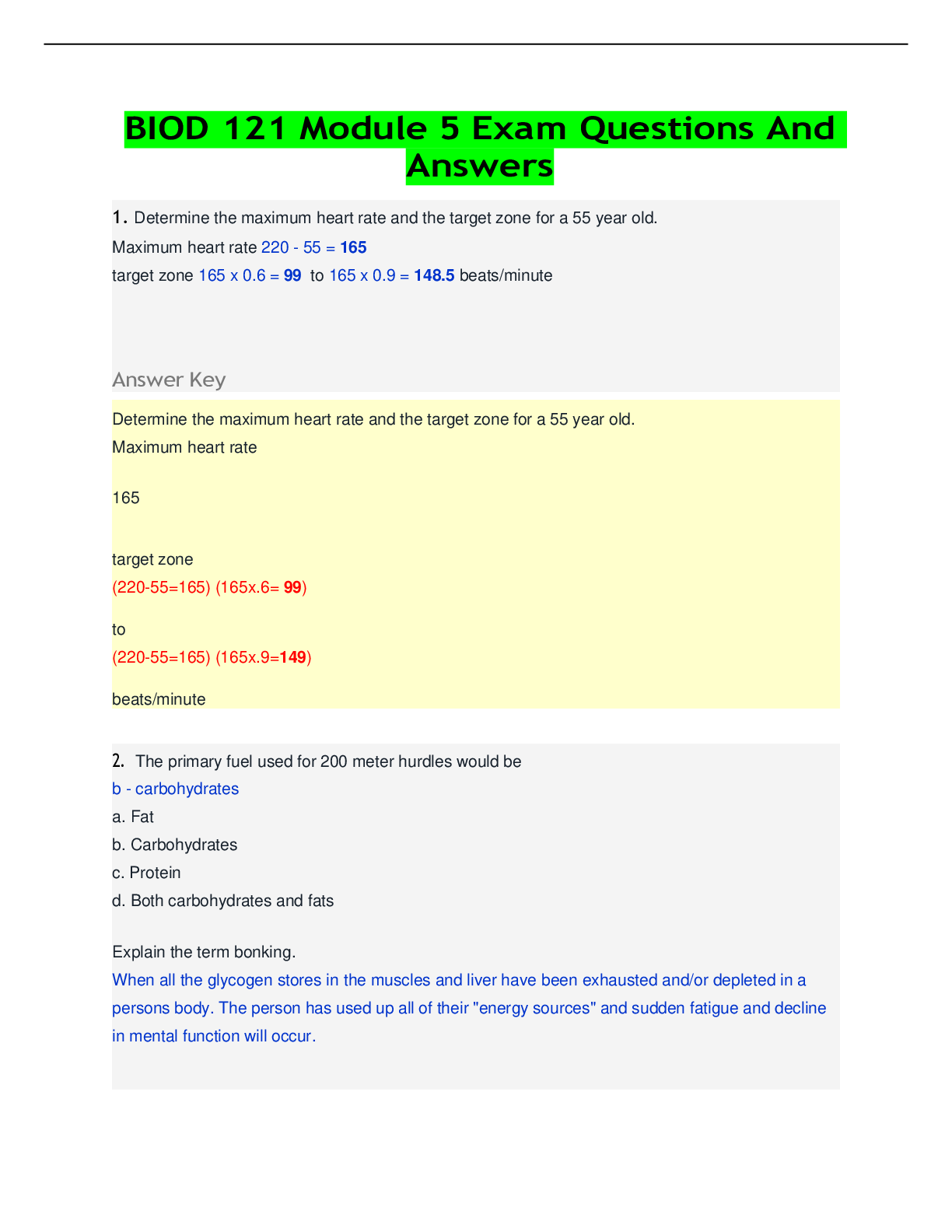
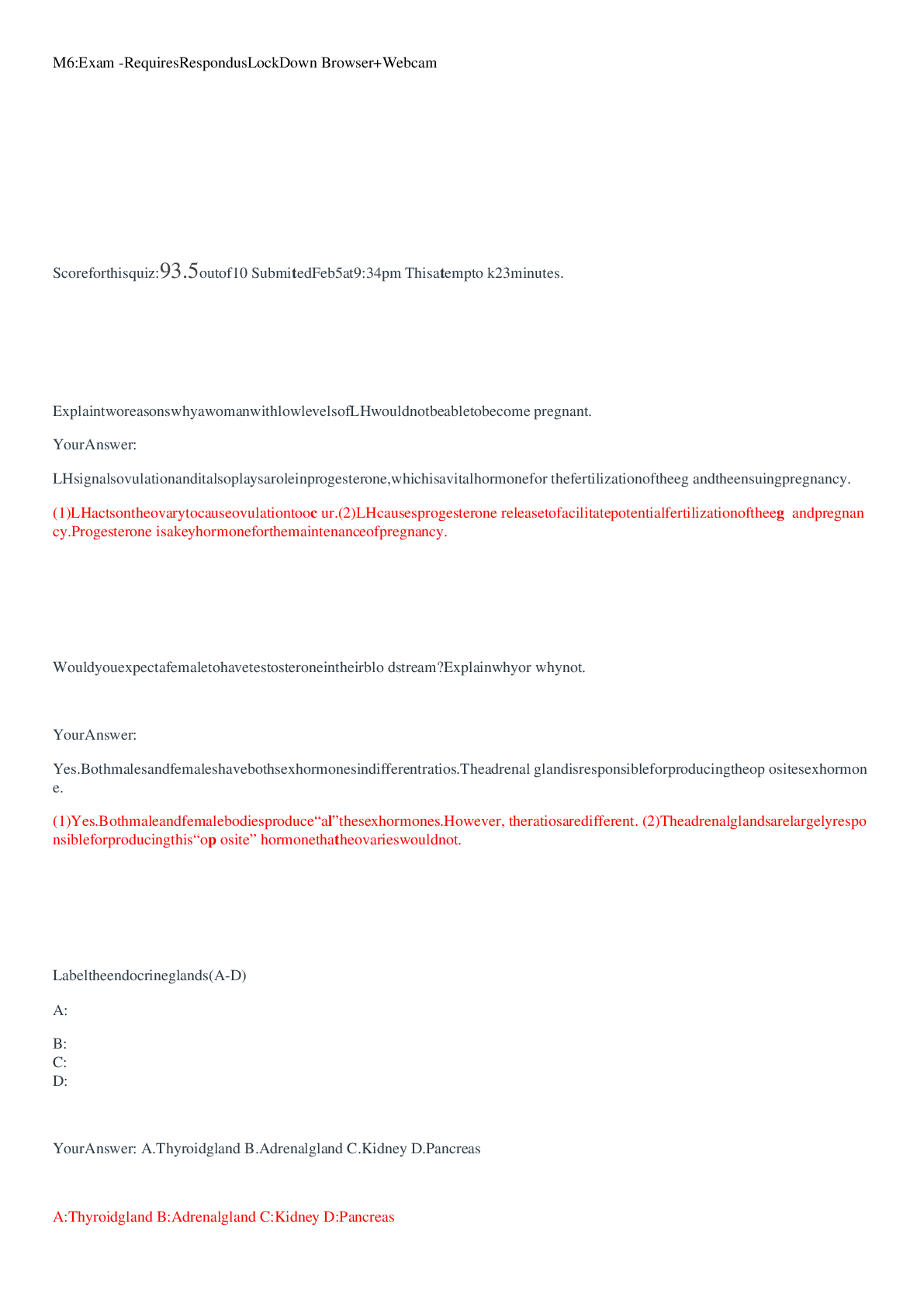
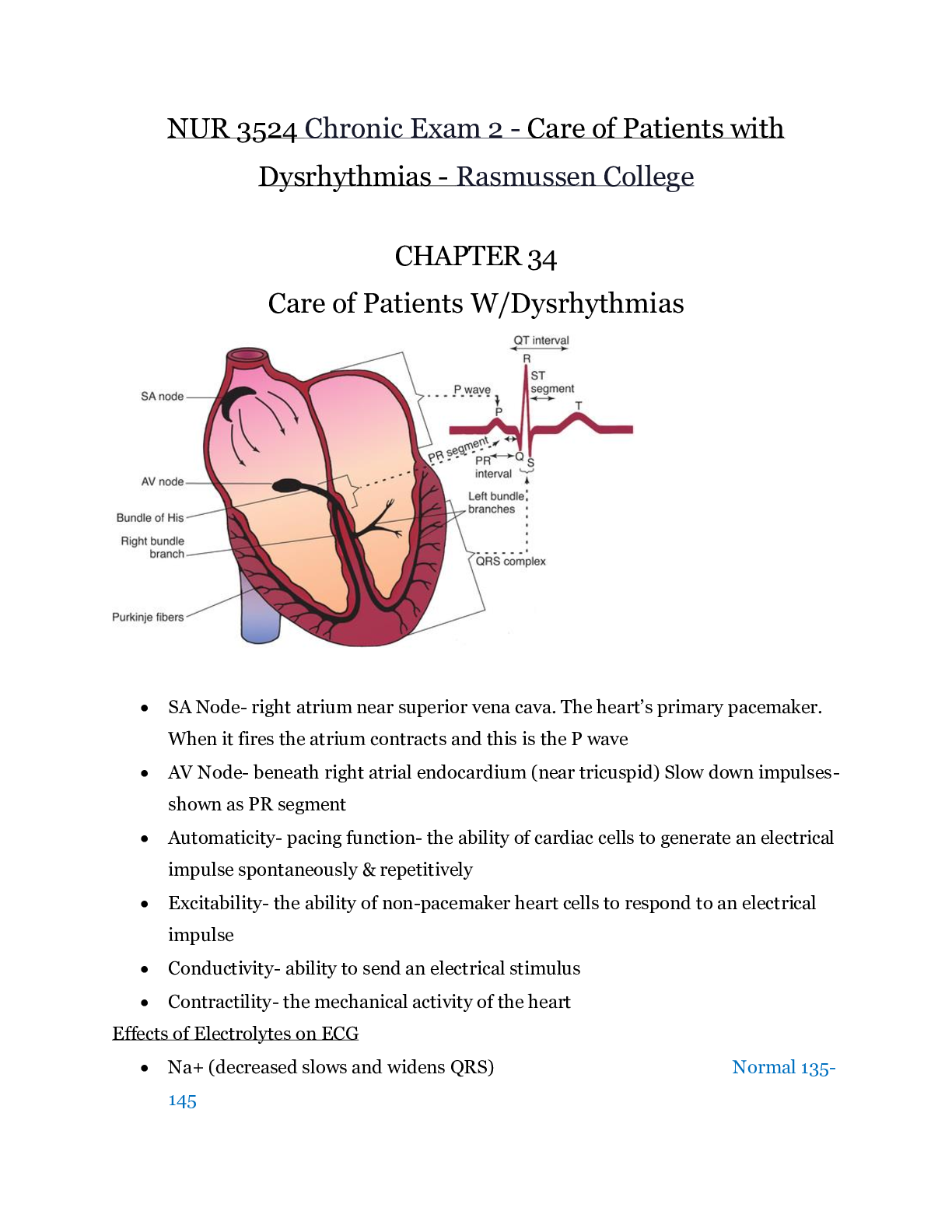

.png)

.png)
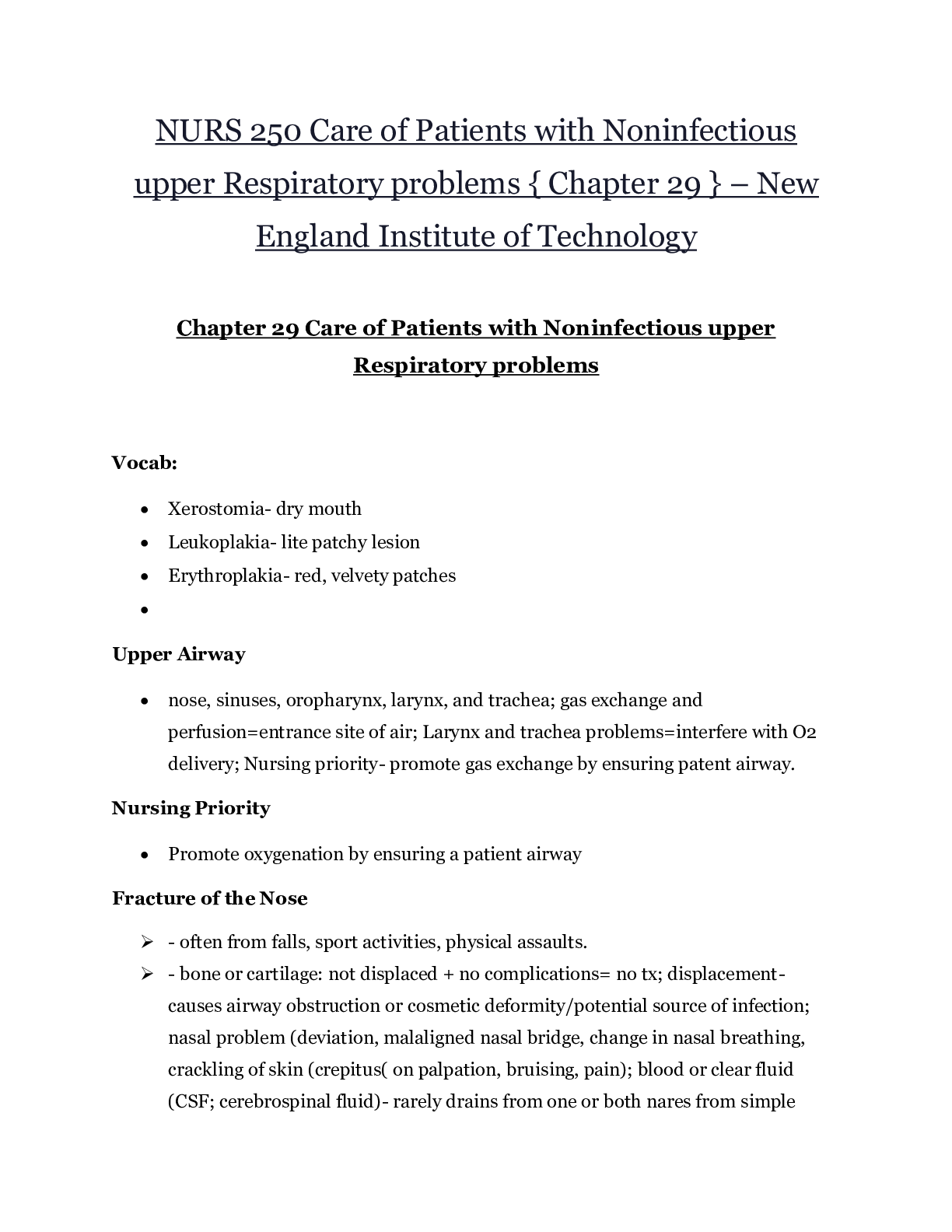

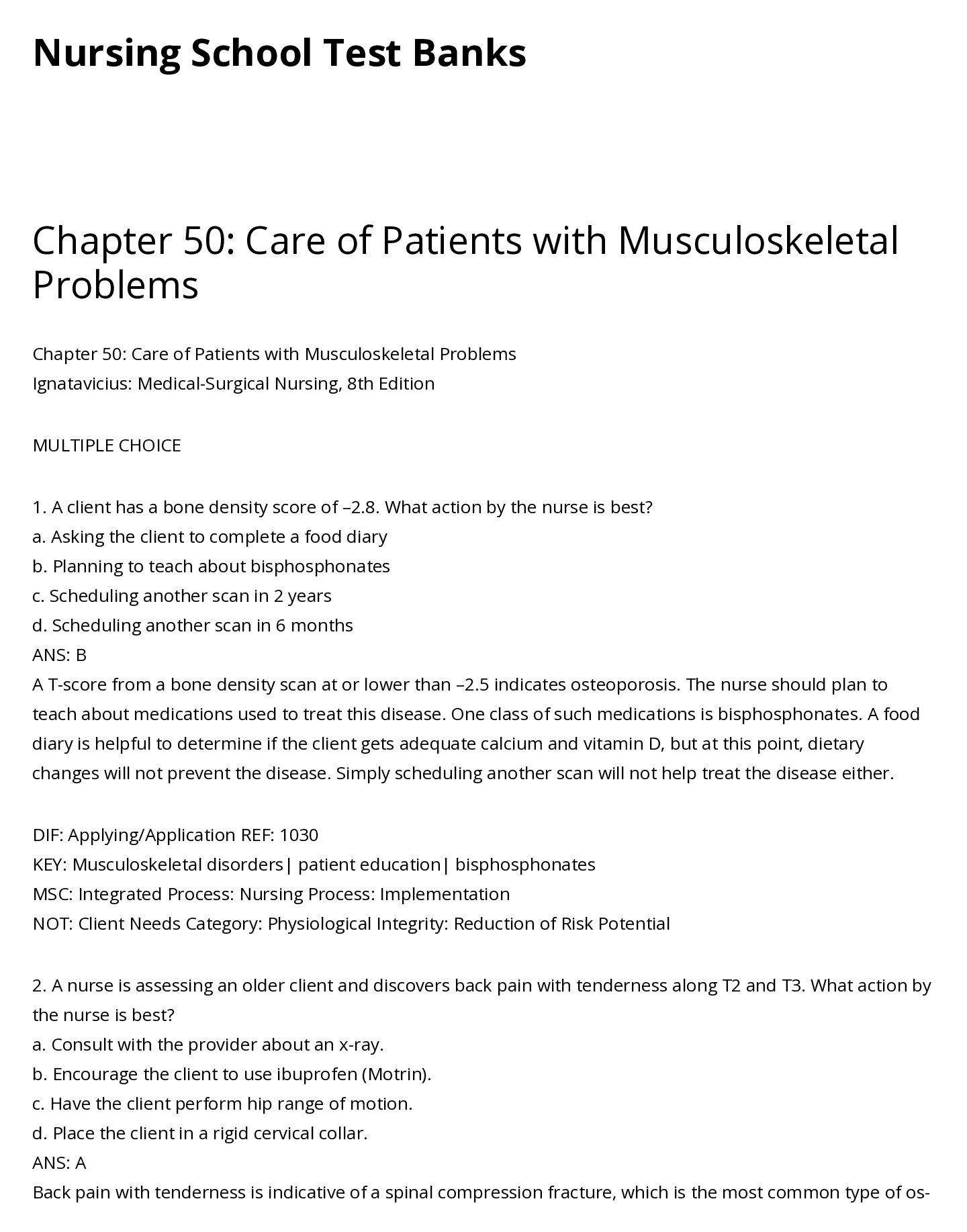
.png)



